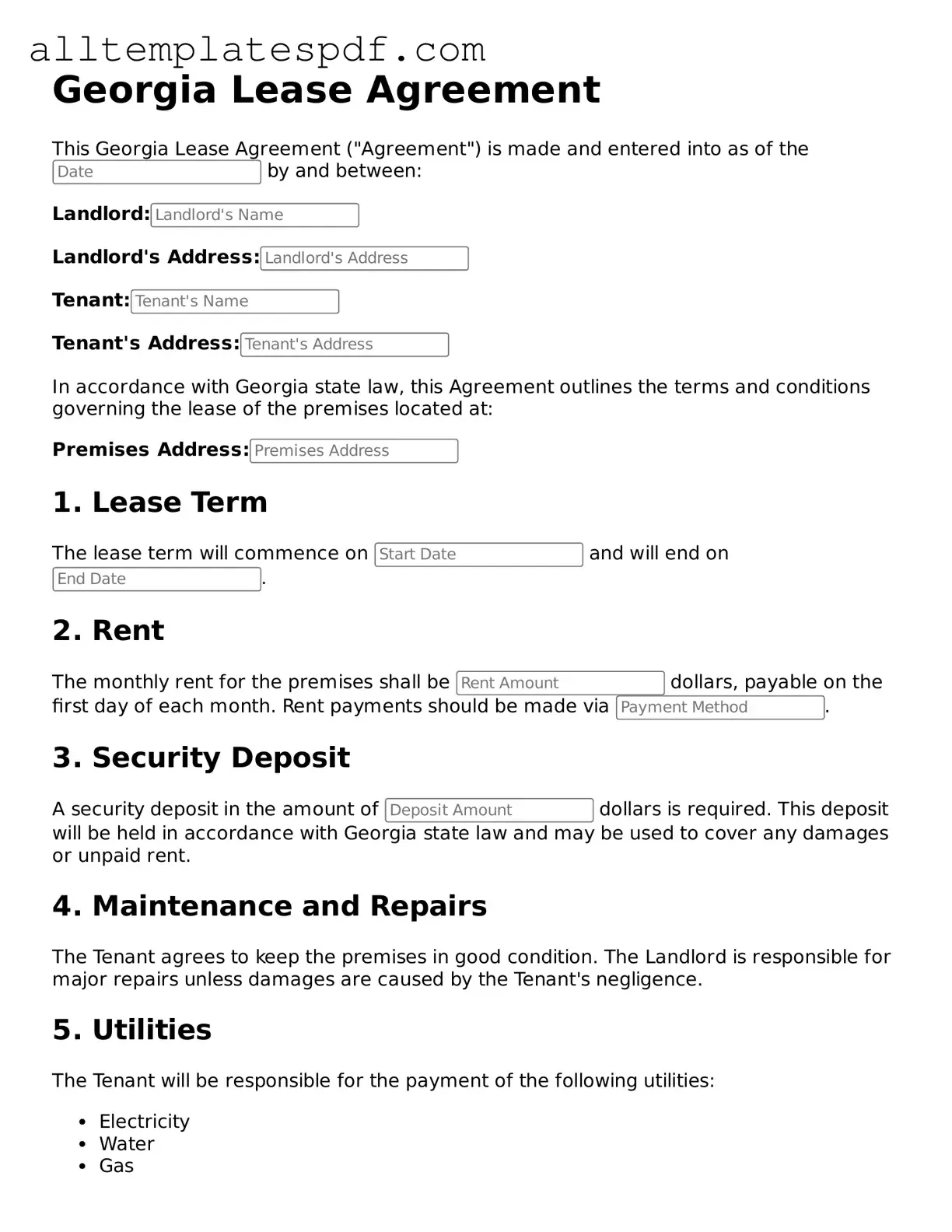Filling out a Georgia Lease Agreement form can be a straightforward process, but many individuals make common mistakes that can lead to misunderstandings or legal complications. One frequent error is neglecting to include all necessary details about the property. Landlords and tenants alike should ensure that the address, unit number, and any relevant property descriptions are clearly stated. Omitting this information can create confusion and might even affect the enforceability of the lease.
Another mistake often seen is failing to specify the lease term. Whether it’s a month-to-month agreement or a fixed-term lease, clarity is crucial. Without a defined start and end date, both parties may have differing interpretations of the agreement. This can lead to disputes down the line, especially when it comes to renewal or termination of the lease.
Many individuals also overlook the importance of detailing rent payment terms. It’s essential to include the amount of rent due, the due date, and acceptable payment methods. Additionally, specifying any late fees or penalties for missed payments can help prevent future disagreements. A vague payment section can leave room for interpretation, which is never ideal in a legal document.
Another common pitfall is the failure to address maintenance responsibilities. Both landlords and tenants should understand who is responsible for repairs and upkeep. Clearly outlining these duties in the lease agreement can save both parties from frustration and financial burden later on. If maintenance responsibilities are not addressed, disputes may arise regarding who should handle repairs or pay for damages.
Lastly, many people forget to include the signatures of all parties involved. A lease agreement is not legally binding until it is signed by both the landlord and tenant. Even if all other sections are completed correctly, missing signatures can render the entire document ineffective. Always double-check that everyone has signed and dated the agreement before considering it finalized.
